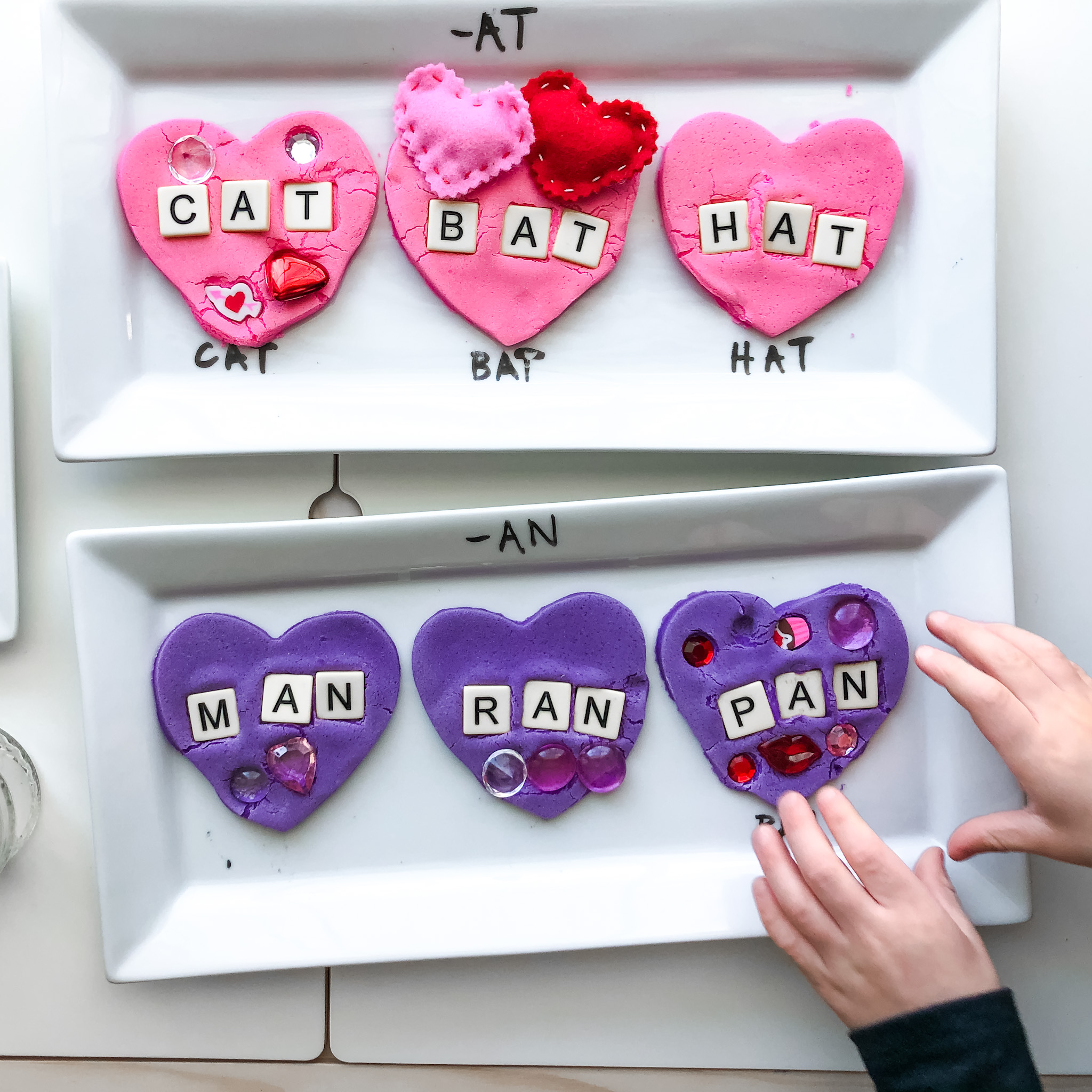Play dough makes for awesome hands-on fun and learning! But you might need to mix it up from time to time to keep your kids interested! Here are three easy ways to make play dough exciting again with with kids!
Here are three fun ways that you may not have tried when it comes to play dough!
Muffin Tin Play Dough Trays!
- What you need:
- Grab a muffin tin
- Add a play dough color or two
- Add little extras (sometimes called loose parts) to create a theme – for loose parts I love: small beads, stones, gems, little sets of figures and animals from Safari Ltd.
- This is calming and supports fine motor development (strengthening those tiny finger muscles needed for writing in the years to come!)
What do kids do with this set up? My kids use the loose parts to decorate the play dough, and they play make believe with the creatures or characters. (More muffin tin activities here.)


2) play dough with books and toys!
Are animals high interest for your kids? This is a quick, easy way to make play dough exciting again!! Try pairing your play dough tray with an animal figure and nonfiction book on the same theme. This is an excellent way to spark kids’ interest in nonfiction texts, and I often read the book aloud as my kids play and act out the animals’ actions.
- Benefits of a book + animal + play dough trays:
- boost children’s reading comprehension by adding hands-on materials
- high interest, low prep activity (click here to sign up for 70 more low prep activity ideas FREE)
- stepping stone to more independent play – play together to model how to play make believe, and in time you’ll likely see your child playing make believe independently as well.
- excellent calming option (click here for more calming strategies)

More on setting up sensory tables for more independent play here.
3) word building with play dough and letter tiles


Play dough and letter tiles make for simple, fun word building! This can be adapted to practice more basic or more advanced phonics skills.
- Set up:
- I started by setting out six play dough hearts.
- I wrote words from the same word family under each heart in dry erase marker, and I pulled the letter tiles he would need to build the words.
- Then he built the words and decorated his hearts.
What’s a word family? Word families are words that have the same middle and ending letters – words ending in -ap, -ig, -ight, etc. each make up a word family. By teaching kids common word families, we can help them decode (or sound out) words more easily. It also helps kiddos learning to blend (put sounds together to make words).
You can also support self regulation by pairing less preferred tasks with highly preferred tasks. For example, first build the word, then decorate the heart.
Sign up for the Low Lift Fun email list to get play and parenting tips delivered straight to your inbox.
Want more high interest and low prep ideas? (click here to sign up for 70 more low prep activity ideas FREE)
